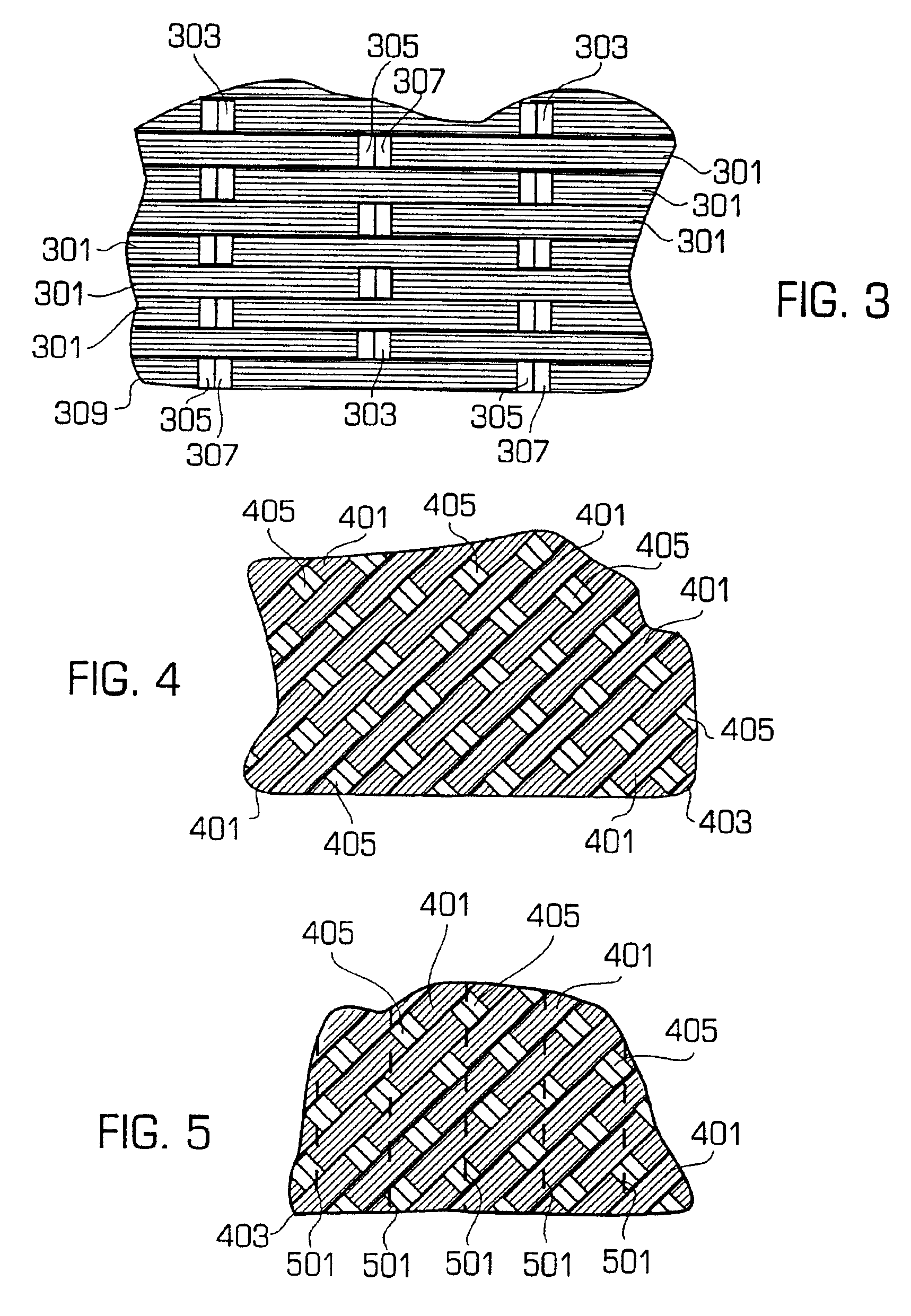Method of manufacturing a stay-in-place form
- Summary
- Abstract
- Description
- Claims
- Application Information
AI Technical Summary
Benefits of technology
Problems solved by technology
Method used
Image
Examples
Embodiment Construction
Stay-In-Place Form
Referring to FIG. 1, a perspective view of a stay-in-place form 100 for use as a support structure, such as a column or beam, is shown. Although stay-in-place form 100 is illustrated as an elongate tubular structure in FIG. 1, it will be appreciated that stay-in-place form 100 may be any desired shape, such as rectangular or octagonal. Stay-in-place form 100 includes an exterior composite shell 101 and a liner 103 secured to the inner surface of composite shell 101. In this way, stay-in-place form 100 provides a hollow closed form into which a slurry of concrete or cement material 105 is placed. Slurry 105 fills stay-in-place form 100 and hardens to form a concrete core 205 of a fully reinforced support structure 200, illustrated in FIG. 2.
Composite shell 101 is formed of a resin-impregnated composite reinforcement layer 107, as illustrated in FIG. 1. Composite reinforcement layer 300 is in direct contact with the outer surface of liner 103 and may be made of a sin...
PUM
| Property | Measurement | Unit |
|---|---|---|
| Weight | aaaaa | aaaaa |
| Shrinkage | aaaaa | aaaaa |
| Elongation | aaaaa | aaaaa |
Abstract
Description
Claims
Application Information
 Login to View More
Login to View More - R&D
- Intellectual Property
- Life Sciences
- Materials
- Tech Scout
- Unparalleled Data Quality
- Higher Quality Content
- 60% Fewer Hallucinations
Browse by: Latest US Patents, China's latest patents, Technical Efficacy Thesaurus, Application Domain, Technology Topic, Popular Technical Reports.
© 2025 PatSnap. All rights reserved.Legal|Privacy policy|Modern Slavery Act Transparency Statement|Sitemap|About US| Contact US: help@patsnap.com



